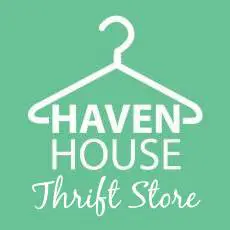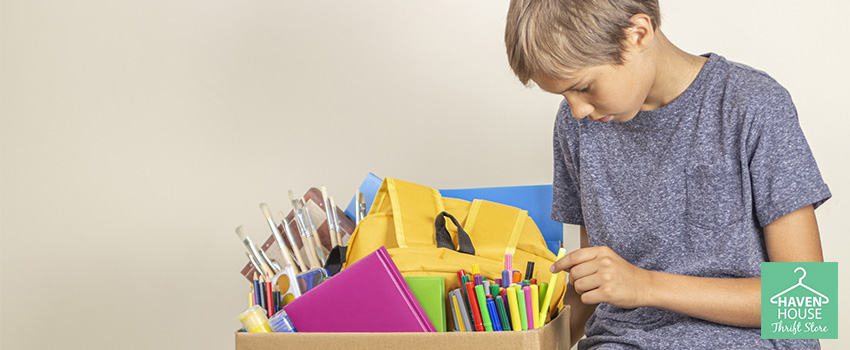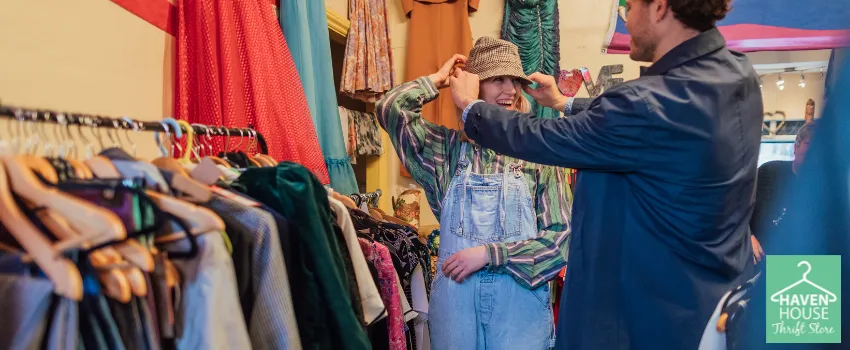In a world overwhelmed by mass-produced, cookie-cutter fashion, thrifting is a rebel force of individuality and sustainability. By embracing pre-loved treasures, you become a part of a powerful movement that challenges the status quo of fast fashion and its environmental devastation.
If you’re an eco-conscious warrior or fashion enthusiast, this article promises an eye-opening and empowering journey you won’t want to miss. So, buckle up and prepare to go thrifting — where fashion meets sustainability, and every purchase becomes a step towards a brighter future.
What Is Thrifting?
Thrifting, also known as secondhand or vintage shopping, involves the exciting world of in-store thrift shopping. Shoppers can purchase used or pre-owned items at a significantly lower price than their original retail value. These items span clothing, accessories, furniture, home decor, and more.
The Significance of Thrifting

Thrifting is a growing trend that has both environmental and social implications. Here are some of its valuable importance in society:
1. Environmental Impact and Sustainability
Reusing pre-owned clothing through thrifting has a lesser environmental impact than buying new, providing an opportunity for more sustainable fashion choices. Going thrifting is purchasing secondhand items from thrift stores, online markets, or other sources.
Thrift shopping online is becoming increasingly popular due to its convenience and affordability while still offering a variety of recycled goods. Regarding environmental sustainability, in-store shopping vs online shopping can be debated as both have advantages.
When you go thrifting, you purchase used products that have already gone through their production cycle, thus reducing the demand for newly produced items. Ultimately, thrifting helps reduce the resources needed for creating new clothing and textile industry waste while contributing to a healthier environment.
2. Reducing Waste and Promoting Recycling
Through in-store thrift shopping, consumers can reduce waste and promote recycling of pre-owned clothing items. Buying secondhand clothes is an effective way to avoid contributing to the alarming amount of textile waste generated each year.
Additionally, when donating unwanted items to thrift stores, it allows others the opportunity to repurpose them. This helps further reduce production costs for manufacturers that would otherwise be used for producing new clothing.
3. Social and Community Importance of Thrifting
The practice of acquiring pre-owned clothing items offers numerous social and community benefits that are often overlooked. Thrifting reduces the amount of textiles sent to landfills, as it allows for the reuse of clothing items and their components.
Moreover, non-profit organizations, such as charities or churches, often operate thrift stores, which can boost revenue in local communities. This money is then used to fund other charitable programs such as youth education and food banks.
When you go thrifting, you can also help provide employment opportunities for people who cannot find jobs in more traditional settings. Lastly, thrifting also helps foster a sense of community by bringing together shoppers from different backgrounds with a shared interest in sustainable fashion.
Differences Between Thrifting and Traditional Shopping

Thrift stores offer goods that are often pre-owned, whereas traditional shopping venues typically sell new items. Here are some of their key differences:
1. Origin of Goods
Tracing the origin of goods is a valuable aspect of thrifting, as it offers insight into the stories and journeys of items acquired. While traditional shopping may provide information about products’ countries of origin, thrift stores allow shoppers to learn where their items come from.
By researching these items’ backgrounds, consumers can better understand the product and its cultural relevance. Such stories may be lost over time with traditional shopping outlets where garments are mass-produced and have no unique history. This way, it provides a more intimate experience than traditional shopping.
2. Price Points
A key advantage of thrifting is its ability to offer a variety of price points for shoppers. Shopping at secondhand stores can save costs, as goods are typically priced below that of their retail counterparts.
On top of that, thrift stores often feature items at higher prices than typical retail outlets. They offer a selection of upscale and luxurious items that might be hard to find elsewhere. This will enable customers to find something within their budget or even splurge on an item they wouldn’t usually be able to purchase new.
3. Shopping Experience
Exploring secondhand stores provides a one-of-a-kind shopping experience not found in traditional retail outlets. Thrifting enables shoppers to find items that are rare and often difficult to obtain elsewhere, creating an exciting atmosphere of discovery. It also lets people interact with sellers, which can create meaningful relationships and help build a sense of community.
4. Impact on the Environment
Thrift shopping can have a positive environmental impact by reducing waste and encouraging reuse. Shopping at thrift stores minimizes the demand for new items, thereby decreasing the production of goods from natural resources.
In addition, thrift store purchases divert clothing and other items from landfills as they are reused instead of thrown away. This also saves energy that would be used to manufacture new products.
Thrifting allows consumers to buy higher-end thrifted clothes and accessories that they might not have been able to afford otherwise. All these effects make thrifting an environmentally conscious choice for fashion and home decor shopping.
Why Is Thrifting Cheaper?

Thrifting is often considered cheaper than buying new items, but why? Here are the factors that contribute to this cost difference:
1. Absence of Middlemen and Production Costs
The absence of intermediaries and production costs associated with thrifting often contributes to the overall savings for consumers. No additional middlemen are involved in the transaction process when buying from a thrift store. Consumers don’t have to pay any mark-ups or extra fees for selling products through multiple channels.
Furthermore, thrifted items do not incur production costs as the original seller has already produced them. As a result, these savings can be passed on to the consumer when purchasing secondhand goods at a fraction of their retail cost.
2. Low Overheads for Thrift Stores
Thrift stores often have low overhead costs, which can benefit both the consumer and the store. By not having to pay for storefronts, staff wages, or high-cost inventory, these stores can keep their prices low and pass on savings to customers.
In addition, thrift stores typically require less capital investment than traditional retail establishments and do not need extensive inventories since items are usually donated. This allows them to maintain a competitive edge in pricing over other outlets.
3. Value Depreciation of Secondhand Goods
Exploring secondhand items can provide a unique opportunity to acquire goods that have experienced value depreciation. The items may be sold at prices lower than their original retail values because they are pre-owned.
The amount of depreciation depends on various factors, such as age, condition, and brand. Older products tend to depreciate more quickly, while newer ones may retain some of their original market value.
In-Store vs Online: Which Thrifting Method Suits You?

Comparing in-store shopping vs online shopping offers an opportunity to identify which method most aligns with your needs, preferences, and lifestyles. Shopping in-store is often preferred by those who value the tactile experience of physical shopping. It also allows for better visualization of items’ condition, size, and color.
On the other hand, thrift shopping online provides convenience that is hard to match and more detailed product descriptions than what can be offered in-store. Simultaneously, it allows shoppers to access a broader range of items worldwide.
Both methods have advantages and disadvantages depending on specific criteria, including cost savings, time constraints, the authenticity of goods purchased, and environmental impact.
The Bottom Line
Thrifting has become a popular way to save money and help the environment. It is an easy and rewarding form of shopping that can be enjoyed in-store and online. It offers unique experiences for shoppers, allowing them to discover rare items at bargain prices.
With knowledge about thrift stores, their benefits, and the differences between in-store and online options, you can maximize your thrifting success when you go thrifting.
Discover hidden gems today at Haven House Thrift Store.
Delve into the enchanting world of thrifting, where you can explore its profound significance, incredible benefits, and captivating in-store shopping vs online shopping.
And for those seeking an extra dash of excitement, venture into Haven House Thrift Store’s vibrant thrift stores in Panama City Beach. While there, you’ll discover a treasure trove of pre-loved gems waiting to be explored and admired. Visit us today!




